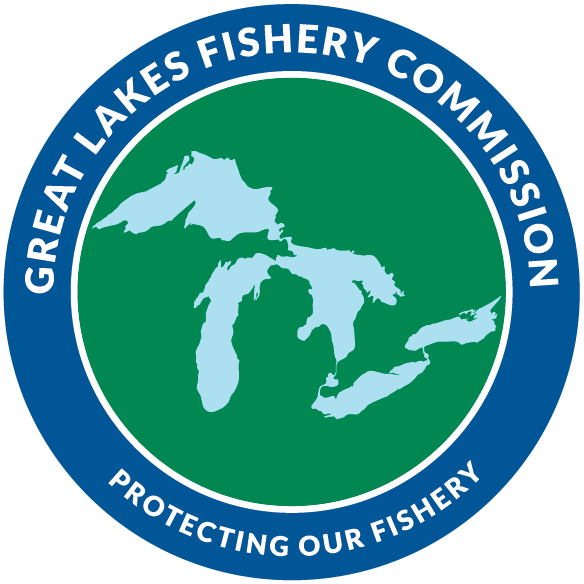Updated 2024-07-05 14:51:34
Lake Huron -> 8.0 Prey -> Prey Fish Species Composition
Reporting Interval
2018 - 2022
Area
main basin
Meeting Target?
Does Not Meet
Indicator Trend
Downward trend
Confidence?
High
8.1.2. Species composition of the Lake Huron prey fish community (by biomass) is at least 75% native
The Prey FCO does not call for restoration of native biodiversity, but stated goals for fishery stability, balance, and sustainability are more likely to be achieved when fish communities consist primarily of indigenous and endemic species (Zimmerman and Krueger 2009). For this reason, importance of native species in bottom trawl catches (expressed as a percentage of total catch) is a useful indicator of prey fish community health. During the current reporting period, native species comprised 71% of prey fish biomass sampled in bottom trawls, which was 4% below target and 3% below the previous period index (74%). However, percentage of native species in bottom trawls met or exceeded target in three years (2019, 2020, 2022) of the five-year reporting period, and 7 of the 10 highest index values have all occurred within the last decade (Figure 1).
Despite these positive trends, increased relative importance of native species in bottom trawl catches is primarily related to changes in biomass of non-native species, which has declined throughout the period of observation (Figure 2). The collapse of Alewife Alosa pseudoharengus in 2004 and decreases in Rainbow Smelt Osmerus mordax abundance have been the primary drivers of these declines (Riley et al. 2008). The modest increase in native species biomass since about 2004 (see Figure 2) is related to the recovery of Bloater Coregonus hoyi (Hondorp et al. 2023).
Prey fish species composition (% native species) in Lake Huron, 1976-2022
Abundance (Biomass) of native and non-native prey fish in Lake Huron, 1976-2022.
Methodology
The United States Geological Survey (USGS) monitors prey fish abundance and species composition in the main basin of Lake Huron each fall using bottom trawls towed along fixed transects in both Michigan and Ontario waters. USGS bottom trawl surveys began in 1976 and have been conducted each year except for 2000 and 2008 (sampling in Ontario waters did not begin until 1998). All trawl catches are sorted by species, counted, and weighed. Mean catch (biomass) of individual species weighted by the area of lake bottom occurring within 10-m depth strata was used to estimate percent species composition (Hondorp et al. 2023, Riley et al. 2008). Target native species composition was set to 75%, which was the threshold used in a recent assessment of Great Lakes prey fish community health (Environment and Climate Change Canada and the U.S. Environmental Protection Agency 2022).
Other Resources
Environment and Climate Change Canada and the U.S. Environmental Protection Agency. 2022. State of the Great Lakes 2022 Technical Report. Cat No. En161-3/1E-PDF. EPA 905-R 22-004. United States Environmental Protection Agency/Environment and Climate Change Canada. URL: https://publications.gc.ca/collections/collection_2022/eccc/En161-3-1-2022-eng.pdf
Hondorp, D.W., O’Brien, T.P., Roseman, E.F., and Esselman, P.C. 2023. Status and Trends of the Lake Huron Prey Fish Community, 1976-2022. U.S. Geological Survey, Ann Arbor, MI. URL: https://www.glfc.org/pubs/lake_committees/common_docs/Huron_2022preyfish_final_20230516.pdf
Riley, S.C., Roseman, E.F., Nichols, S.J., O'Brien, T.P., Kiley, C.S., and Schaeffer, J.S. 2008. Deepwater demersal fish community collapse in Lake Huron. Trans. Am. Fish. Soc. 137(6): 1879-1890.
Zimmerman, M.S. and C.C. Krueger 2009. An ecosystem perspective on re-establishing native deepwater fishes in the Laurentian Great Lakes. N. Am. J. Fish. Mgmt. 29(5): 1352-1371.
Contributing Author(s)
- Darryl Hondorp - United States Geological Survey
- Tim O'Brien - United States Geological Survey
- Ryan Lauzon - Saugeen Ojibway Nation
- Jason Smith - Bay Mills Indian Community
- Jeff Jolley - Michigan Department of Natural Resources

